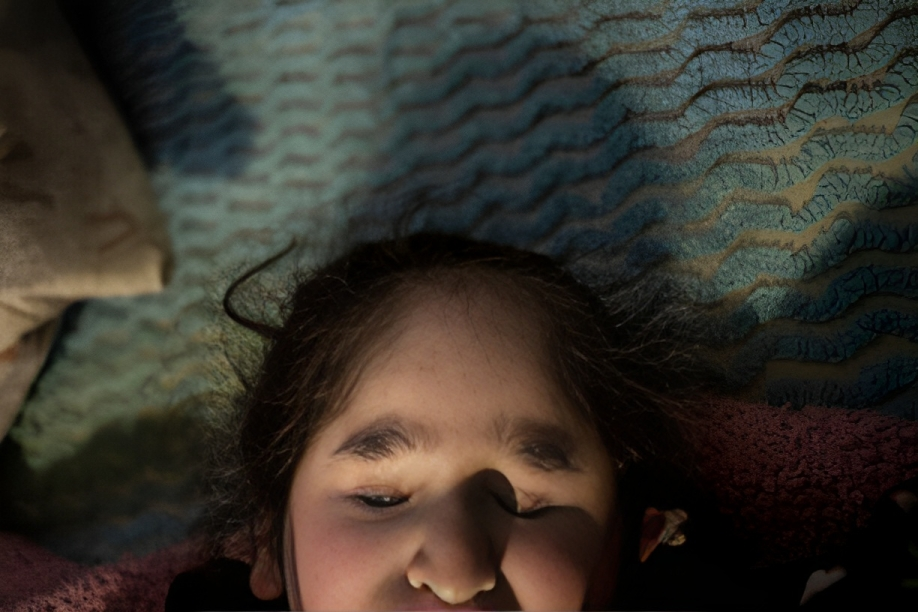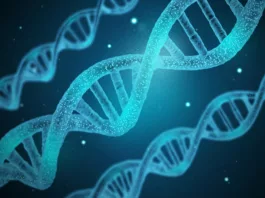Smith Lemli Opitz Syndrome is an autosomal recessive disorder that causes multiple congenital anomalies due to defective cholesterol metabolism. This syndrome restricts the growth of children before and after birth. It is characterized by facial anomalies (cleft palate and cleft lip), low intellectuality, learning disabilities, microcephaly (small skull), cardiac anomalies, underdeveloped genitalia, multiple fingers, or fusion of fingers.
In the United States of America, SLOS affects 1:20000 to 1:60000 births. This syndrome affects males and females equally.1National Organization for Rare Disorders. (2023, November 20). Smith-Lemli-Opitz Syndrome – Symptoms, causes, treatment | NORD. https://rarediseases.org/rare-diseases/smith-lemli-opitz-syndrome/
Background
The Smith-Opitz syndrome was first described by Dr. Smith, Lemli, and Opitz in 1964. It was first known as RSH syndrome, but then it was better known by the name of doctors who described it. The exact cause of this syndrome was unknown till 1993. After that, scientists discovered that patients with SLOS do not have a sufficient amount of cholesterol in their body. Moreover, cholesterol deficiency results from a defect in 7-dehydrocholesterol Delta 7 reductase (DHCR7), which is involved in sterol synthesis. Genetic studies confirm the diagnosis of this syndrome.2Nowaczyk, M. J. (2020, January 30). Smith-Lemli-Opitz Syndrome. GeneReviews® – NCBI Bookshelf. https://www.ncbi.nlm.nih.gov/books/NBK1143/
Causes of Smith Lemli Opitz Syndrome
SLOS is a congenital autosomal recessive disorder that is caused by a mutation in the DHCR7 gene. This gene is involved in cholesterol synthesis. Cholesterol is the waxy substance that is an essential component for the development of your body. Moreover, it maintains the integrity of the cell membrane and protects your nerve cells. It also involves the formation of sex hormones and digestive enzymes.
Mutation in DHCR7 results in the decline of the activity of 7-dehydrocholesterol reductase, which is involved in the synthesis of cholesterol. Additionally, it also leads to the accumulation of cholesterol by-products that are toxic to your body.3Smith-Lemli-Opitz syndrome: MedlinePlus Genetics. (n.d.). https://medlineplus.gov/genetics/condition/smith-lemli-opitz-syndrome/#causes
Inheritance Pattern of Smith Lemli Opitz Syndrome
SLOS is an autosomal recessive disorder. It occurs when the affected person has a mutated gene from each parent. If the patient has one mutated gene and one normal, then this person is called a carrier of SOLS. Therefore, This person does not manifest symptoms of SOLS.
The risk of disease transmission from carrier parents is 25% are affected, 50% are carriers, and 25 remain unaffected. Additionally, prenatal genetic testing during pregnancy in high-risk individuals can diagnose this syndrome.4Smith-Lemli-Opitz syndrome (Concept Id: C0175694) – MedGen – NCBI. (2022). Nih.gov. https://www.ncbi.nlm.nih.gov/medgen/61231
Signs & Symptoms of Smith lemli Opitz syndrome
There are multiple signs and symptoms of the SOLS. However, the most common are:
- Respiratory distress
- Hearing impairment
- Visual loss
- Lethargy
- Nausea and vomiting
- Feeding difficulties
- Growth retardation
- Constipation
- Cyanosis (discoloration of the skin due to decreased blood supply)
- Photosensitivity
- Edema
- Ascites
- Congestive heart failure
Clinical Features of Smith lemli Opitz Syndrome
The features of this syndrome vary from person to person, depending upon the severity of the disease. This syndrome affects multiple systems of your body. Every system shows its clinical features. Clinically, this syndrome is characterized by the following:
Gastrointestinal Manifestations & Feeding Problems:
Patients with SLOS are hypotonic as they can not feed well and it is difficult to thrive. Their metabolic profile is not good enough.
- Constipation is the main gastrointestinal problem that occurs due to decreased motility of the gut.
- Gastroesophageal reflux disease (GERD)
- Liver disease can occur in some individuals, depending upon the severity of the disease.
Neurological Manifestations:
The most common neurological manifestation of this syndrome is hypotonia. It also affects the sensory and motor development of the individuals.
Brain:
This syndrome affects the development of the brain and myelination of the nerve fibers due to a deficiency of cholesterol. The developmental anomalies related to the brain and spinal cord of this syndrome are:
- Delayed myelination of the nerve fiber
- Dilatation of the ventricles causes hydrocephalus
- Dandy-walker syndrome

Developmental & Behavioral Disorders:
Patients with SOLS have cognitive impairment that also depends upon the severity of the disease. The behavioral signs and symptoms of this syndrome are:
- Irritable
- Sleep disturbance
- Self-harm attempts
- Autism
- Socially withdrawn
- Anxiety and depression
Dermatological Manifestations:
Photosensitivity is the most common clinical feature of this syndrome. Most people with SOLS can not tolerate the exposure of sunlight.
Cardiac Anomalies:
About 50 percent of the patients with SOLS show cardiac anomalies. The most common cardiac defects are:
- Pulmonary stenosis causing pulmonary hypertension
- Atrioventricular septal defect
Renal Anomalies:
About 25 percent of the patients with SOLS present with renal anomalies. These are:
- Renal agenesis
- Renal hypoplasia
- Hydronephrosis (collection of fluid in the kidney)
Oral Features:
The oral anomalies of this syndrome are:
- Cleft lips and cleft palate that contribute to feeding difficulty
- Enamel hypoplasia
- Multiple teeth
- Marked gap between the incisor teeth
Facial features of Smith Lemli Opitz Syndrome:
The characteristic facial features of the Smith lemli Opitz syndrome are :
- Small head
- Ptosis (drooping of the eyelid)
- Strabismus
- Epicanthal folds (skin fold of the upper eyelid that cover the inner eye)
- Short nose
- Small mandible
- Short neck
- Formation of the capillary hemangioma
- Low set ears
Ophthalmological Features:
In 20 % of the cases, congenital cataracts are present and affect the visual field. Other clinical findings are:
- Ptosis (drooping of the eyelid)
- Strabismus (both eyes line up in different directions)
- Optic nerve hypoplasia

Respiratory :
Respiratory problems can occur due to cardiac and respiratory tract anomalies. These findings are :
- Lungs hypoplasia
- Upper and lower respiratory tract infections
- Respiratory distress
Musculoskeletal Abnormalities:
Musculoskeletal abnormalities are the most common and are characterized by;
- Syndactyly (fusion of the fingers): Y shape syndactyly is most common in which the second and third toes are fused
- Polydactyly (multiple fingers)
- Small Thumb
Otologic Features:
Patients with SLOS have small ears with recurrent otitis media (middle ear infection) and hearing loss.
Genital Features:
Genital anomalies affect males and females equally but are more obvious in males. These genital anomalies include:
- Hypospadias (abnormal urethral opening)
- Bilateral Cryptorchidism (undescended testis)
- Precocious puberty
Endocrine Anomalies:
This syndrome affects the synthesis of hormones that are precursors of cholesterol, including testosterone, cortisol, and aldosterone. The endocrine features of this syndrome are:
- Hypoglycemia (decreased glucose level)
- Hypertension
- Electrolyte imbalance
- Impotence
- Loss of libido5Kelley, R. I., & Hennekam, R. C. (2000). The Smith-Lemli-Opitz syndrome. Journal of Medical Genetics, 37(5), 321–335. https://doi.org/10.1136/jmg.37.5.321
Diagnosis of Smith Lemli Opitz syndrome
The diagnosis of Smith Lemli Opitz syndrome is based on history, physical examination, and laboratory investigations.
History:
A complete history of the patient will help to diagnose the syndrome. Your doctor will ask for your name and age. After that, he will ask for some questions:
- Do you have a cousin’s marriage or not?
- Does your previous child have this disease or not?
- Any positive family history of this syndrome?
Physical Examination:
During the physical examination, your doctor will check for the clinical features that we have discussed above.
Laboratory Investigations:
Laboratory studies help diagnose the disease both prenatally and postnatally.
Prenatal Diagnosis
Prenatal ultrasound can detect anomalies in the child. If there are suspicious findings in the ultrasound that are linked to the Smith Lemli Opitz syndrome, a laboratory workup of amniotic fluid is advised to check the concentration of 7DHC. However, the elevated concentration of 7DHC is suggestive of SLOS.
Postnatal Diagnosis
Smith lemli Opitz syndrome is usually diagnosed clinically, but the suspicion is confirmed by laboratory and genetic evaluation. In case of positive clinical findings, serum cholesterol, plasma sterols, and low-density lipoprotein level (LDL) are the diagnostic tests for Smith lemli Opitz syndrome.
Other laboratory investigations are:
- Serum electrolyte level
- Serum cortisol and ACTH levels to rule out other diseases
Imaging Studies:
Various imaging studies can also help support the diagnosis. These studies include:
MRI or CT Scan of the Brain
MRI and CT scans provide 3-dimensional images of the brain. This imaging study reveals the structural anomalies in the brain.
Abdominal & Renal Ultrasound
An abdominal ultrasound of the patient helped to rule out the pyloric stenosis and other diseases. A renal ultrasound can help check the renal status.
X-ray Abdomen Erect
X-ray abdomen can help to see obstruction if Hirschsprung disease is suspected.
Chest Radiography
Chest X-rays help your doctor see cardiopulmonary anomalies.
How to treat Smith Lemli Opitz syndrome?
There is no successful treatment for Smith email Opitz syndrome, but the disease can be managed symptomatically. The symptomatic treatment of this syndrome includes:
Supplementation of the Cholesterol:
SLOS is caused by metabolic errors in cholesterol production. Due to this, cholesterol level is decreased in the body, and the precursors of cholesterol that are toxic to your body begin to add up and cause multiple problems. The supplementation of cholesterol reduces the 7DHC level and toxic precursor of cholesterol and improves the level of cholesterol in your body. The dose of cholesterol supplementation depends upon the severity of the disease. Improvements seen after cholesterol supplementation include:
- Growth is improved
- Increase in nerve conduction due to myelination of the nerve fibers
- Increase the muscle tone of the patient
- Decrease in photosensitivity
- Learning and behavior are improved
Antioxidants Supplementations:
According to a study, 7DHC and cholesterol precursors have oxidant properties. This oxidant is toxic to the brain and eye. Their supplementation of antioxidants in the form of vitamins has improved the vision of the patient and killed the toxic oxidants.

Cholic Acid Supplementation:
Bile is the precursor of cholesterol. Bile acids help to absorb cholesterol and nutrients. In the absence of bile acids, the patient can not absorb sufficient amounts of cholesterol and other nutrients. Patients with severe forms of SLOS can not synthesize bile due to a deficiency of cholesterol. Therefore, supplementation of bile acids (cholic acid) has shown improvement in cholesterol levels.
Supportive Treatment:
Supportive treatment is necessary for patients who have manifestations of Smith-Opitz syndrome. These are:
Oxygen Therapy
Patients with severe forms of SOLS have cardiopulmonary complications that lead to respiratory distress. Therefore, oxygen therapy is necessary to avoid respiratory failure cyanosis.
Feeding Difficulty
Feeding therapy is necessary for patients who have feeding difficulties and can not tolerate it orally. A gastrostomy tube is placed to feed you or your baby.
Constipation
Stool softeners, laxatives, and prokinetics relieve constipation.
Sleep Disturbance
Melatonin is given to improve your sleep cycle.
Epilepsy
Anti-epileptic drugs after consultation with the neurologist are necessary.
Physiotherapy
Patients with SLOS have hypotonia, so to improve muscle tone, physiotherapy is helpful.
Photosensitivity
The following measures can protect photosensitivity:
- Avoid sun exposure
- Proper clothing
- Use sun blocks
- Sunscreens that protect you from UVA and UVB
Hearing Loss
Hearing aids are used to overcome your hearing loss.6Yu, H., & Patel, S. B. (2005). Recent insights into the Smith-Lemli-Opitz syndrome. Clinical genetics, 68(5), 383–391. https://doi.org/10.1111/j.1399-0004.2005.00515.x
Surgical Care:
Surgical intervention is required to treat the manifestations of Smith lemli Opitz syndrome. These are:
- Congenital heart defects need surgical intervention to avoid serious complications
- Limb defects like polydactyly and syndactyly need surgical interventions
- Consider repair of cleft palate and cleft lip to prevent feeding and speaking problems
- Consider pyloromyotomy in case of pyloric stenosis7Facmg, R. D. S. M. F. (n.d.). Smith-Lemli-Opitz Syndrome follow-up: further outpatient care, further inpatient care, inpatient & outpatient medications. https://emedicine.medscape.com/article/949125-followup#e5
Life Expectancy of Smith Lemli Opitz Syndrome
Patients who have a severe degree of this syndrome and have low cholesterol levels below 20 mg/dl usually can not survive and usually die at birth or in the early years of their life. Early diagnosis and treatment can increase life expectancy.
Therefore, prognosis depends upon the severity of the disease and associated malformations. Heart and brain anomalies are considered to be lethal. Mildly affected patients can live into adulthood.8Gurarie, M. (2022, January 30). An overview of Smith Lemli Opitz Syndrome. Verywell Health. https://www.verywellhealth.com/smith-lemli-opitz-syndrome-4772315
Conclusion
To conclude, this syndrome is an autosomal recessive disorder that causes congenital anomalies due to defective cholesterol metabolism. These include neurological, oral, cardiac, and renal anomalies. Patients with this syndrome may have behavioral abnormalities, respiratory problems, and dermatological manifestations. Additionally, the management of Smith lemli Opitz syndrome is symptomatic. The prognosis depends on the severity of the disease and associated anomalies.
Refrences
- 1National Organization for Rare Disorders. (2023, November 20). Smith-Lemli-Opitz Syndrome – Symptoms, causes, treatment | NORD. https://rarediseases.org/rare-diseases/smith-lemli-opitz-syndrome/
- 2Nowaczyk, M. J. (2020, January 30). Smith-Lemli-Opitz Syndrome. GeneReviews® – NCBI Bookshelf. https://www.ncbi.nlm.nih.gov/books/NBK1143/
- 3Smith-Lemli-Opitz syndrome: MedlinePlus Genetics. (n.d.). https://medlineplus.gov/genetics/condition/smith-lemli-opitz-syndrome/#causes
- 4Smith-Lemli-Opitz syndrome (Concept Id: C0175694) – MedGen – NCBI. (2022). Nih.gov. https://www.ncbi.nlm.nih.gov/medgen/61231
- 5Kelley, R. I., & Hennekam, R. C. (2000). The Smith-Lemli-Opitz syndrome. Journal of Medical Genetics, 37(5), 321–335. https://doi.org/10.1136/jmg.37.5.321
- 6Yu, H., & Patel, S. B. (2005). Recent insights into the Smith-Lemli-Opitz syndrome. Clinical genetics, 68(5), 383–391. https://doi.org/10.1111/j.1399-0004.2005.00515.x
- 7Facmg, R. D. S. M. F. (n.d.). Smith-Lemli-Opitz Syndrome follow-up: further outpatient care, further inpatient care, inpatient & outpatient medications. https://emedicine.medscape.com/article/949125-followup#e5
- 8Gurarie, M. (2022, January 30). An overview of Smith Lemli Opitz Syndrome. Verywell Health. https://www.verywellhealth.com/smith-lemli-opitz-syndrome-4772315





